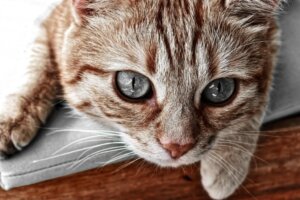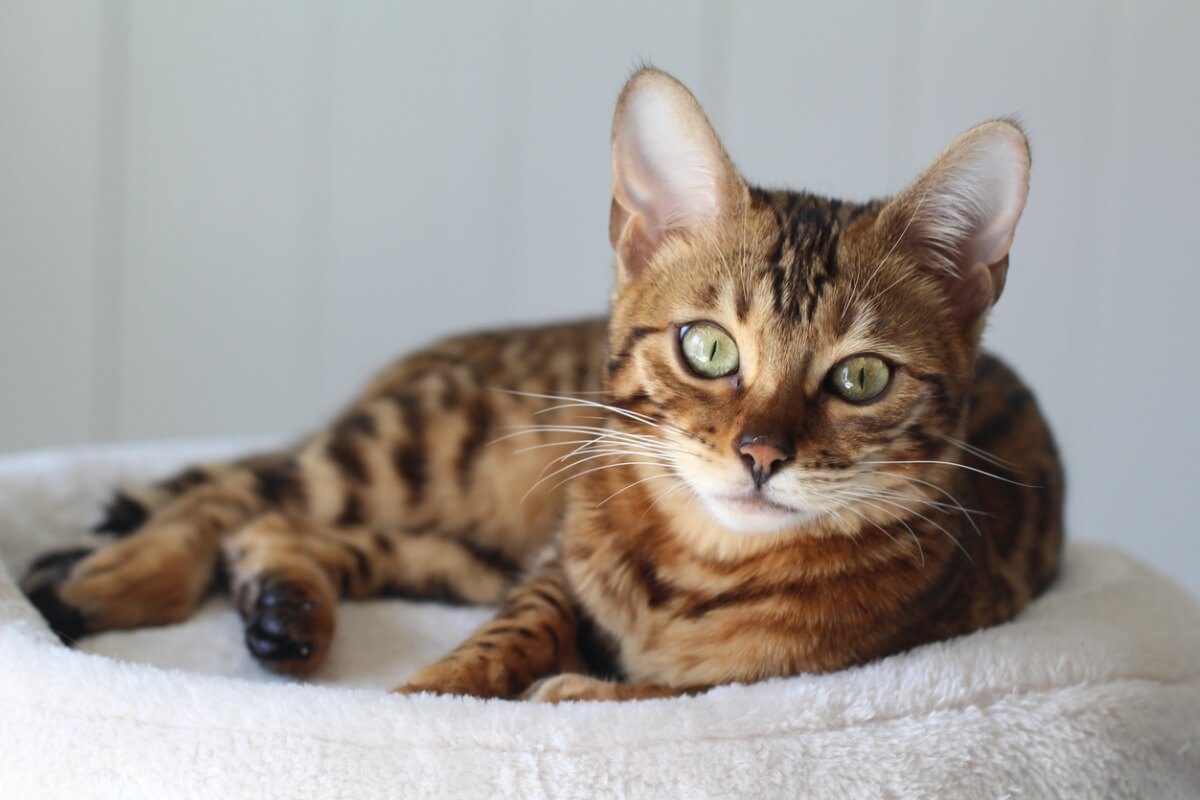Feline Calicivirus: Symptoms and Treatment

Feline calicivirus is one of the most common infections that can cause respiratory disease in cats. Although other viruses and bacteria can also be infectious agents and promote these types of conditions in your feline friend.
Typical clinical signs of an upper respiratory infection involve the nose and throat, such as sneezing, nasal congestion, conjunctivitis (inflammation of the membranes lining the eyelids) and nasal or ocular discharge.
Nasal discharge may be clear or may turn a greenish-yellow color. In addition to these typical symptoms, cats with feline calicivirus infection often develop ulcers on the tongue, palate, gums, lips, or nose.
Signs or symptoms
Cats affected with feline calicivirus will usually salivate or drool excessively, as the ulcers are very painful. Other non-specific signs of an upper respiratory infection include anorexia, lethargy, fever, and enlarged lymph nodes. They will also suffer from hypersensitivity to light so you’ll see them squinting.
Some strains of calicivirus can cause an infected cat to develop a sudden, painful limp in one or more joints. This occurs most often in younger kittens. Although rare, there’s a specific strain of feline calicivirus that causes severe generalized disease.
Initial symptoms affect the eyes, nose and mouth, but the infected cat quickly develops high fever, severe depression, edema of the legs and/or face, jaundice, and symptoms of multiple organ disease. This strain is highly infectious and the mortality rate is up to 67%.

How does a cat get feline calicivirus infection?
Calicivirus is highly contagious and infected cats can spread the virus in saliva or secretions from the nose or eyes. If an infected cat sneezes, airborne viral particles can be sprayed several meters through the air.
It’s speculated that the virus can also be shed in urine or feces, but this isn’t considered a major source of infection. Susceptible cats can become infected by direct contact with another infected cat or by environmental exposure to objects contaminated with infectious secretions.
The virus can survive up to a week in a contaminated environment and possibly longer in a cool, moist place. Although all susceptible cats can develop a calicivirus infection, symptoms tend to be more severe in young kittens.
How long does a typical feline calicivirus infection last?
Once a cat is exposed to calicivirus, it will go through an incubation period of 2 to 6 days before developing clinical signs that generally last 14 to 21 days. Throughout this time, the cat will be potentially infectious to other felines. At a minimum, infected cats will shed the virus in their bodily secretions for 2 to 3 weeks.
After apparent recovery from the disease, up to half of all infected cats may develop a carrier state in which they’ll continue to shed the virus. In some of these animals, the carrier state may last only a few months, but in a small percentage it may persist for life.
Carrier cats may or may not show signs of infection when they’re actively shedding calicivirus and are a major source of infection for susceptible cats. Female cats that are carriers of this virus can transmit the infection to their newborn kittens.
Treatment of feline calicivirus
Most cats with an uncomplicated calicivirus infection can be treated symptomatically at home. Your veterinarian may prescribe an eye medication to be applied topically if your cat has a green or yellow purulent eye discharge.
Broad-spectrum antibacterial medications may be prescribed to prevent secondary bacterial infections from complicating the disease, especially in young kittens. However, viral infections don’t respond to these types of medications.
The veterinarian may administer anti-inflammatory medications to alleviate symptoms of lameness. Cats with persistent ulcers may benefit from treatments that support the immune system.
Cats with nasal or respiratory tract congestion may benefit from increased environmental humidification, such as being taken into a steam bath for 10 to 15 minutes several times a day. However, it’s prudent to consult with a specialist about this technique.
Feline calicivirus is one of the most common infections that can cause respiratory disease in cats. Although other viruses and bacteria can also be infectious agents and promote these types of conditions in your feline friend.
Typical clinical signs of an upper respiratory infection involve the nose and throat, such as sneezing, nasal congestion, conjunctivitis (inflammation of the membranes lining the eyelids) and nasal or ocular discharge.
Nasal discharge may be clear or may turn a greenish-yellow color. In addition to these typical symptoms, cats with feline calicivirus infection often develop ulcers on the tongue, palate, gums, lips, or nose.
Signs or symptoms
Cats affected with feline calicivirus will usually salivate or drool excessively, as the ulcers are very painful. Other non-specific signs of an upper respiratory infection include anorexia, lethargy, fever, and enlarged lymph nodes. They will also suffer from hypersensitivity to light so you’ll see them squinting.
Some strains of calicivirus can cause an infected cat to develop a sudden, painful limp in one or more joints. This occurs most often in younger kittens. Although rare, there’s a specific strain of feline calicivirus that causes severe generalized disease.
Initial symptoms affect the eyes, nose and mouth, but the infected cat quickly develops high fever, severe depression, edema of the legs and/or face, jaundice, and symptoms of multiple organ disease. This strain is highly infectious and the mortality rate is up to 67%.

How does a cat get feline calicivirus infection?
Calicivirus is highly contagious and infected cats can spread the virus in saliva or secretions from the nose or eyes. If an infected cat sneezes, airborne viral particles can be sprayed several meters through the air.
It’s speculated that the virus can also be shed in urine or feces, but this isn’t considered a major source of infection. Susceptible cats can become infected by direct contact with another infected cat or by environmental exposure to objects contaminated with infectious secretions.
The virus can survive up to a week in a contaminated environment and possibly longer in a cool, moist place. Although all susceptible cats can develop a calicivirus infection, symptoms tend to be more severe in young kittens.
How long does a typical feline calicivirus infection last?
Once a cat is exposed to calicivirus, it will go through an incubation period of 2 to 6 days before developing clinical signs that generally last 14 to 21 days. Throughout this time, the cat will be potentially infectious to other felines. At a minimum, infected cats will shed the virus in their bodily secretions for 2 to 3 weeks.
After apparent recovery from the disease, up to half of all infected cats may develop a carrier state in which they’ll continue to shed the virus. In some of these animals, the carrier state may last only a few months, but in a small percentage it may persist for life.
Carrier cats may or may not show signs of infection when they’re actively shedding calicivirus and are a major source of infection for susceptible cats. Female cats that are carriers of this virus can transmit the infection to their newborn kittens.
Treatment of feline calicivirus
Most cats with an uncomplicated calicivirus infection can be treated symptomatically at home. Your veterinarian may prescribe an eye medication to be applied topically if your cat has a green or yellow purulent eye discharge.
Broad-spectrum antibacterial medications may be prescribed to prevent secondary bacterial infections from complicating the disease, especially in young kittens. However, viral infections don’t respond to these types of medications.
The veterinarian may administer anti-inflammatory medications to alleviate symptoms of lameness. Cats with persistent ulcers may benefit from treatments that support the immune system.
Cats with nasal or respiratory tract congestion may benefit from increased environmental humidification, such as being taken into a steam bath for 10 to 15 minutes several times a day. However, it’s prudent to consult with a specialist about this technique.
All cited sources were thoroughly reviewed by our team to ensure their quality, reliability, currency, and validity. The bibliography of this article was considered reliable and of academic or scientific accuracy.
- https://www.petmd.com/cat/conditions/infectious-parasitic/c_ct_feline_calicivirus
- https://petairapy.com/feline-calicivirus-in-cats/
- https://wagwalking.com/cat/condition/feline-calicivirus-infection
This text is provided for informational purposes only and does not replace consultation with a professional. If in doubt, consult your specialist.








